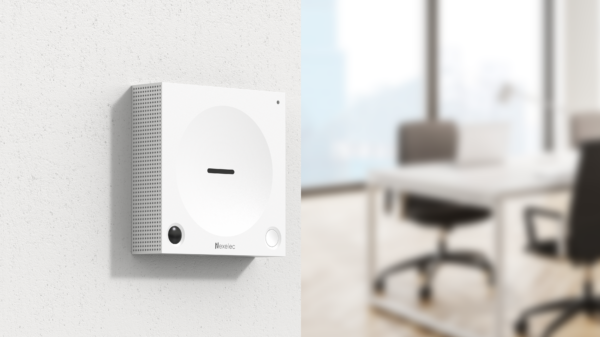Indoor air quality (IAQ) is a fundamental health issue, especially given that we spend up to 90% of our time in enclosed spaces. Various pollutants, present in building materials, furnishings, cleaning products and human activities, can compromise this quality. Fine particles, volatile organic compounds (VOCs) and carbon monoxide (CO) are examples of pollutants that can have immediate effects, such as irritation and fatigue.

Understanding indoor air pollutants
Indoor air quality depends on the concentration of various pollutants. Among the most common are :
Fine particles :
- PM10: Particles smaller than 10 micrometers, from dust, pollen and industrial activities.
- PM2.5: 2.5-micrometer particles, mainly from tobacco, cooking, candles and certain bacteria.
- PM0.1 and PM1: Ultrafine particles, from exhaust gases and combustion products, which can penetrate deep into the lungs and bloodstream.
Gaseous pollutants :
- Carbon monoxide (CO): Colorless, odorless gas produced by the incomplete combustion of fuels. At high concentrations, it can cause headaches and dizziness. It can also cause serious disorders, such as neurological diseases.
- Volatile organic compounds (VOCs): Gases emitted by products such as paints and air fresheners can cause respiratory tract irritation. In the long term, they also increase the risk of cancer.
Gaseous pollutants :
Carbon monoxide (CO): Colorless, odorless gas produced by the incomplete combustion of fuels. At high concentrations, it can cause headaches and dizziness. It can also cause serious disorders, such as neurological diseases.
Volatile organic compounds (VOCs): Gases emitted by products such as paints and air fresheners can cause respiratory tract irritation. In the long term, they also increase the risk of cancer.
Sources of indoor pollution
Indoor pollution can come from a number of sources:
- Building and decorating materials: Some materials can emit volatile pollutants.
- Furniture and cleaning products: Furniture, especially made of composite materials, and cleaning products are major sources of pollution.
- Human activities: DIY, cleaning and smoking introduce pollutants. Although ecological cleaning products exist, their effectiveness varies.
- Outdoor environment: Indoor pollution can be up to seven times higher than outdoor pollution.
Impact of air quality on employee health
In the short term, poor air quality can cause irritation, allergies and fatigue. These symptoms, such as eye irritation, headaches and sleep disorders, are exacerbated in poorly ventilated environments.
In the long term, prolonged exposure to pollutants can lead to respiratory illnesses such as asthma, cardiovascular disease and even cancer. Fertility disorders and impacts on child development are risks associated with poor air quality.
Regulations and best practices
Since September 2023, France has made it mandatory for construction products to be labeled for volatile pollutant emissions. The Grenelle II law requires regular monitoring of indoor air quality. This specifically concerns establishments open to the public. Article R4211-1 of the French Labor Code stipulates that employers must guarantee healthy air for their employees.
To improve air quality, it’s crucial to :
- Maintain ventilation systems: Regular cleaning and checking that they are working properly are essential to prevent the build-up of pollutants.
- Choose low-emission materials and equipment: Opting for low-emission paints and certified wood furniture helps reduce pollutants.
- Manage sources of internal pollution: This includes managing cleaning products and optimizing ventilation.
Indoor Air Quality sensors
Sensors like those offered by Nexelec measure various pollutants such as CO2, fine particles and VOCs. These devices provide real-time monitoring and enable preventive measures to maintain a healthy working environment. Thanks to a luminous signalling system, these sensors facilitate informed decision-making. The result is improved indoor air quality.
